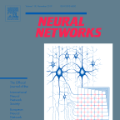This paper introduces AirCNN, a novel paradigm for implementing convolutional neural networks (CNNs) via over-the-air (OTA) analog computation. By leveraging multiple reconfigurable intelligent surfaces (RISs) and transceiver designs, we engineer the ambient wireless propagation environment to emulate the operations of a CNN layer. To comprehensively evaluate AirCNN, we consider two types of CNNs, namely classic two-dimensional (2D) convolution (Conv2d) and light-weight convolution, i.e., depthwise separable convolution (ConvSD). For Conv2d realization via OTA computation, we propose and analyze two RIS-aided transmission architectures: multiple-input multiple-output (MIMO) and multiple-input single-output (MISO), balancing transmission overhead and emulation performance. We jointly optimize all parameters, including the transmitter precoder, receiver combiner, and RIS phase shifts, under practical constraints such as transmit power budget and unit-modulus phase shift requirements. We further extend the framework to ConvSD, which requires distinct transmission strategies for depthwise and pointwise convolutions. Simulation results demonstrate that the proposed AirCNN architectures can achieve satisfactory classification performance. Notably, Conv2d MISO consistently outperforms Conv2d MIMO across various settings, while for ConvSD, MISO is superior only under poor channel conditions. Moreover, employing multiple RISs significantly enhances performance compared to a single RIS, especially in line-of-sight (LoS)-dominated wireless environments.
翻译:暂无翻译



